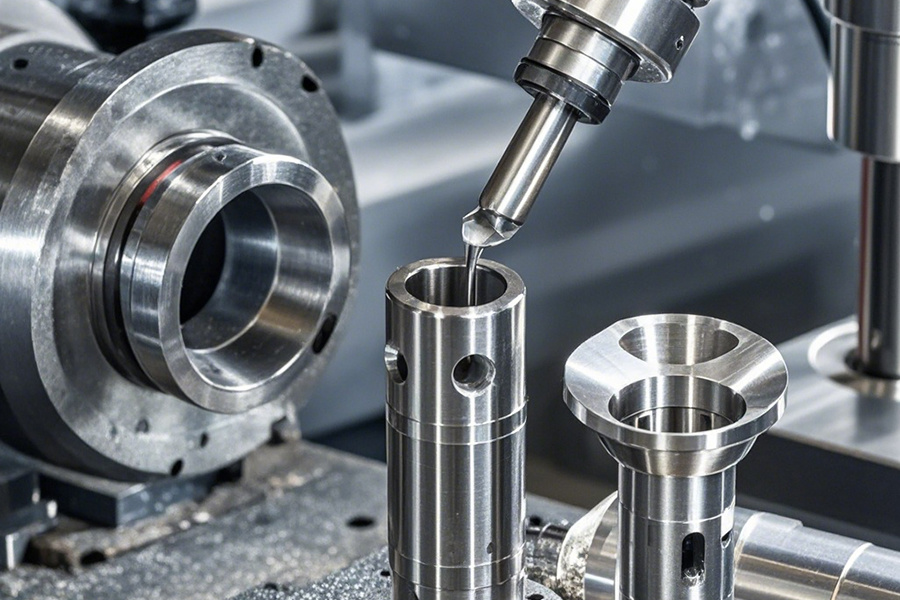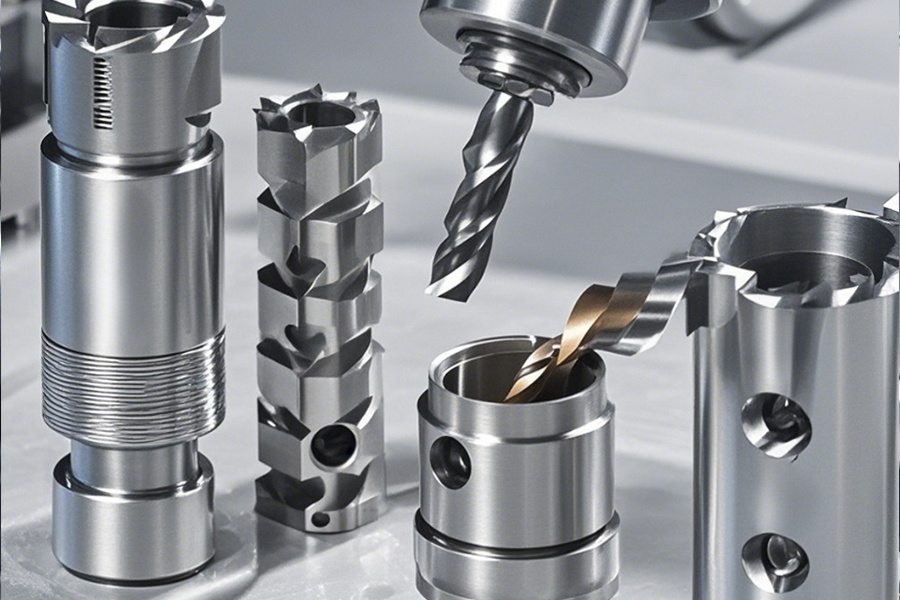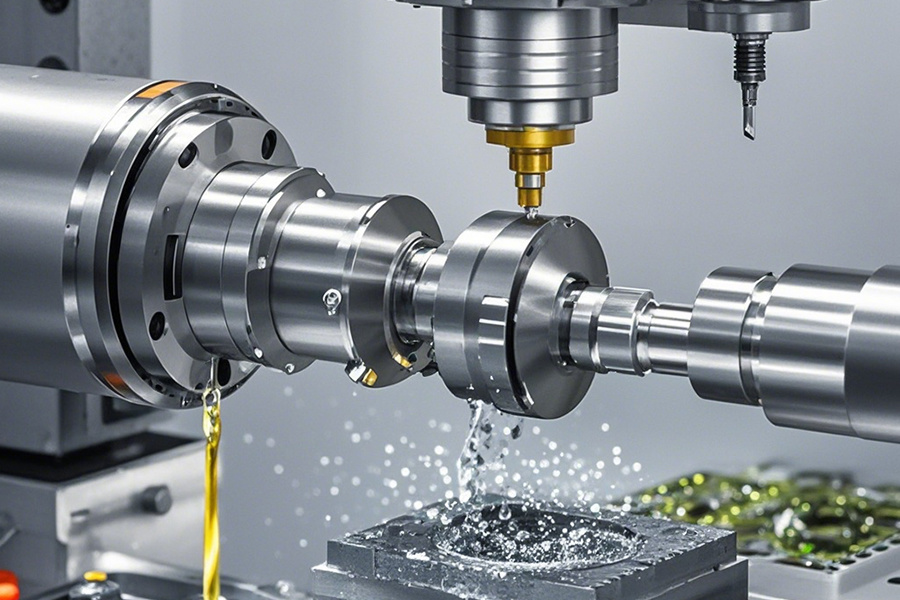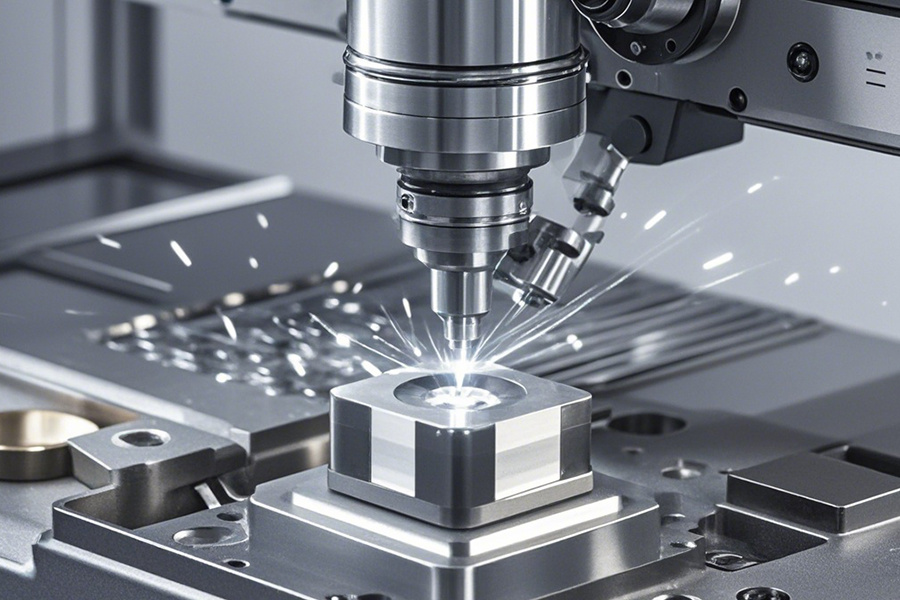Technical Difficulties and Solutions for Deep Hole Drilling
Release time:
2024-11-04
It has important applications in many industries. However, due to its special processing requirements, it also faces a series of technical difficulties.
In the field of modern mechanical processing, deep hole drilling is a challenging process. It has important applications in many industries. However, due to its special processing requirements, it also faces a series of technical difficulties.
Technical difficulties in deep hole drilling
1. Difficult chip removal
During deep hole drilling, the chips generated need to be discharged from the hole in time, otherwise they will block the hole, affect the processing quality and even damage the tool. Due to the long length of the deep hole, the chips are subject to greater resistance during the discharge process and are easily entangled on the tool. This makes chip removal a major technical difficulty in deep hole drilling.

2. Fast tool wear
In deep hole drilling, the tool needs to cut within a longer stroke and is subjected to greater cutting force and friction. At the same time, due to the difficulty of chip removal, the chips are prone to friction with the tool, aggravating the wear of the tool. In addition, the cutting environment in the deep hole is relatively harsh and the temperature is high, which will also accelerate the wear of the tool.
3. Difficult to ensure processing accuracy
The ratio of the length to the diameter of the deep hole is usually large, which greatly affects the rigidity of the tool during processing. The tool is prone to bending and vibration under the action of cutting force, which leads to a decrease in machining accuracy. In addition, it is difficult to measure deep holes, and it is difficult to grasp the machining accuracy in real time.
4. Cooling and lubrication problems
A large amount of heat will be generated during deep hole drilling. If it cannot be cooled in time, it will lead to problems such as increased tool wear and changes in workpiece material properties. At the same time, good lubrication can reduce the friction between the tool and the workpiece and improve the machining quality. However, in deep hole machining, how to effectively cool and lubricate is a difficult problem.
Solutions to technical difficulties
Optimize tool design
In order to solve the problems of difficult chip removal and fast tool wear, the tool can be optimized. For example, a special edge shape and angle are used to make the chips easier to curl and discharge. At the same time, choose the right tool material to improve the hardness and wear resistance of the tool. In the automotive field, for deep hole machining of parts such as engine cylinders, high-performance tools are required to ensure machining quality and efficiency.
Adopt advanced machining technology
1. Gun drilling method
Gun drilling is a commonly used deep hole drilling method. It uses a single-edged drill bit to discharge chips from the hole through high-pressure coolant. Gun drilling has the advantages of high processing accuracy and good surface quality, and is suitable for processing small-diameter deep holes. In the processing of automobile chassis, the deep hole processing of some key parts can be processed by gun drilling.
2. Internal chip removal deep hole drilling method
The internal chip removal deep hole drilling method uses the channel inside the drill bit to discharge the chips out of the hole. This method is suitable for deep hole processing with larger diameters, which can improve chip removal efficiency and reduce tool wear. In the food industry, the deep hole processing of some equipment can adopt the internal chip removal deep hole drilling method to ensure the hygiene and processing quality of the equipment.
Strengthen cooling and lubrication
1. High-pressure cooling technology
The use of high-pressure coolant can effectively discharge chips from the hole and reduce the processing temperature at the same time. High-pressure coolant can be sprayed into the cutting area through the channel inside the drill bit or the external nozzle to improve the cooling and lubrication effect. In the manufacture of stage lighting equipment, the deep hole processing of some optical components requires the use of high-pressure cooling technology to ensure processing accuracy and surface quality.
2. Minimum lubrication technology
Minimum lubrication technology is a new cooling and lubrication method that achieves the purpose of cooling and lubrication by spraying a small amount of lubricant in the form of mist into the cutting area. Minimum lubrication technology can reduce the use of lubricants, reduce processing costs, and is also more environmentally friendly. Minimum lubrication technology can be used in some industries with high environmental requirements, such as the food industry and stage lighting.

Deep hole drilling is a challenging process that requires corresponding solutions to technical difficulties. By optimizing tool design, adopting advanced processing technology, strengthening cooling and lubrication, and using computer-aided technology, the quality and efficiency of deep hole drilling can be effectively improved to meet the needs of different industries. In the future mechanical processing field, with the continuous advancement of technology, deep hole drilling will become more intelligent, efficient and green.
Key Words





